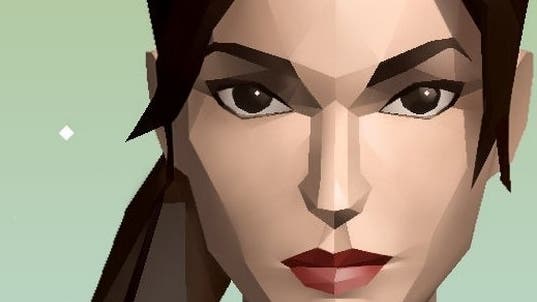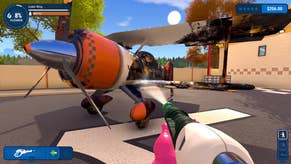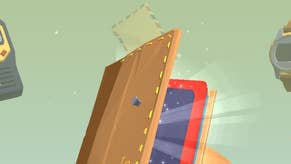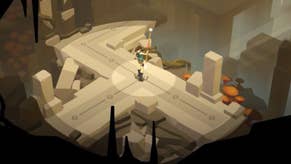The Double-A Team: Lara Croft Go - an unusual gem that strikes the core of the series
Time raider.
The Double-A Team was formed with a certain kind of game in mind. The kind of game where a shaven-headed character takes on generic baddies, armed with a gimmick of some kind. Psionic powers, or a big hammer, or doves. We love these games, whole-heartedly and without irony. But sometimes it's nice to stretch the meaning of Double-A just a little.
Is Lara Croft Go a Double-A game? It's probably bending the concept a bit to say yes. It has a gimmick, but it also has a kind of Triple-A poise to it. Yet it's also clearly a cheaper outing for a blockbuster series. I will leave this maths to you. I want to talk about Lara Croft Go because it's wonderful.
A while back Square-Enix started reworking some of its big budget games as these Go titles for mobiles. Hitman was the first. Hitman Go looked a bit like a kind of Hitman Subbuteo. It was a spatial puzzler in which you had to work your way through levels, killing without being killed, understanding the rules and fitting inside them. The pieces looked like pieces from a physical board game. It was ingenious and delightful. I liked it a lot.
Then we got Lara Croft Go. Again, it took a complex thing and retooled it as a pure puzzler. But it no longer looked like a board game. It looked like a handsome low-poly take on the Tomb Raider universe, jungles and caves and temples, and Lara looked a bit like her triple-a video game self and could even do that special handstand move when mantling. But now she moved on a series of set paths, each level a kind of circuit board to be navigated. There was combat against beasties and there were rolling boulders, but they all moved in step, locked into the turns you took, as in a Roguelike. And the combat and the boulders were all parts of puzzles really.
I liked this game when it came out. It was brisk and clever. But I came back to it a few weeks ago and I suddenly love it. In contorting Tomb Raider into such an odd shape - a puzzler, moving on a track, through arcadey levels that generally take a minute or two to complete - the series has somehow found its purest expression since the Core Design games. I love the Crystal Dynamics games, but there was a kind of Ubi-creep in there, they were becoming more like other games. Tomb Raider in the Core days was emphatically itself, wilful, lonely, often infuriating, but magical and transporting.
Lara Croft Go captures this. You're alone - wonderfully alone, except for snakes and lizards and spiders - and each level is generally one big puzzle. There are Tomb Raider staples like saws and weak bits of ground and levers and spikes, but you move through them as if you're coaxing one big machine to do what you want it to do, which is clear a path to the exit, so you can do the whole thing again. There's a rhythm component that I find fascinating. Enemies have predictable moves so you are essentially programming a route through them, and that often involves finding the rhythms, the dance steps, that will allow you to mesh a spider's sequence with a saw blade's sequence, so you can navigate both unharmed.
Lonely traversal through an ancient puzzle of a world. This is Tomb Raider, even before you throw in classic sound effects and that beautiful dial menu system. The main campaign is fun, but the follow-ups are even better. One is double-difficult and I cursed it and loved it in equal measure, but I fought through it all refusing a single hint. The other is a truly lovely work by KO_OP, the Gnog people, which proves - I had never considered this - that the team's classic Activity Bear designs in Gnog, where everything is a lever or a button or a doo-dad, translate perfectly to the tactile world of Tomb Raider, with its rumbling stone mechanisms and pressure plates.
One last thing. The Core games get a lot of their strange character, I think, from the grid system they use, a kind of scale or gauge for all the fun, that renders each complex world as a series of invisible cubes, each cube fitting Lara perfectly. It made movement quite distinct - Tomb Raider never felt in the hand like other third-person games - and it also allowed you to judge distances and jumps and all that jazz really beautifully.
In a way, this has all come back for Lara Croft Go. She moves from one node to another, and the world is built around the reliable distances between those nodes. Lara returns to the grid! This is a special, special game.














